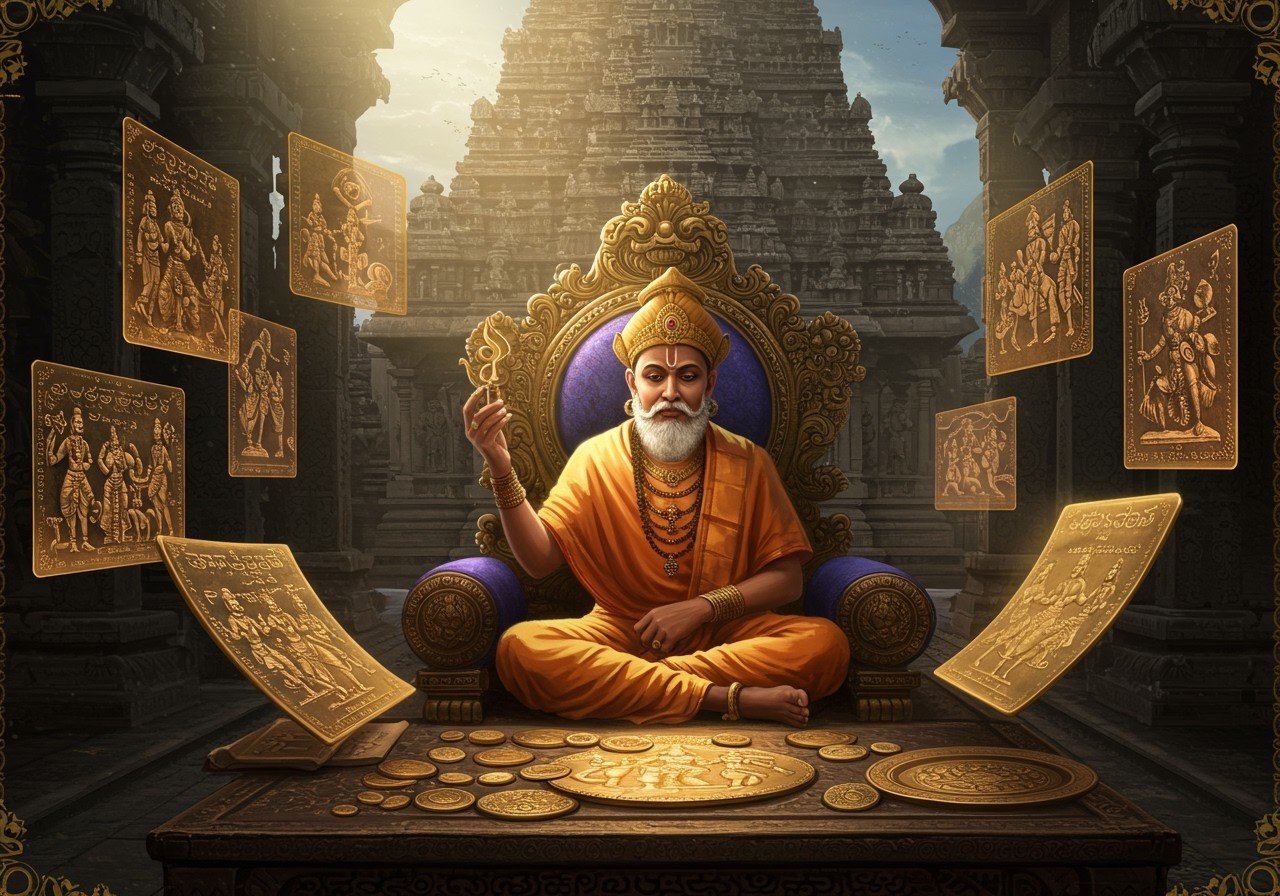
The Rashtrakuta Dynasty, a prominent power in the Deccan region between the 6th and 10th centuries, left an indelible mark on Indian history. Known for their significant contributions to art, culture, and administration, their legacy is visible through their rich literary works, detailed inscriptions, and diverse coinage. This blog delves into these aspects, highlighting the enduring influence of the Rashtrakutas.
Flourishing Literature under Rashtrakuta Patronage
The Rashtrakutas were renowned patrons of literature, nurturing an environment where scholars and poets thrived. Kannada literature saw a significant rise during their reign, with the “Kavirajamarga,” the earliest known Kannada literary work, being a testament to their influence. This work, composed by Sri Vijaya, served as a guide for aspiring poets and writers.
Pampa, a celebrated Kannada poet, flourished under Rashtrakuta patronage, creating epic poems that are still revered today. The dynasty’s support extended beyond regional languages to Sanskrit literature as well. Many literary works from this era were penned by Jain scholars, highlighting the influence of Jainism within the Rashtrakuta court. These works often explored themes of heroism, morality, and devotion, reflecting the cultural and philosophical landscape of the time.
Inscriptions: Windows into Rashtrakuta Society
The Rashtrakutas documented their reign extensively through inscriptions on copper plates and stone surfaces, found throughout their vast empire. These inscriptions offer invaluable insights into their administration, societal structure, and cultural practices. For instance, the Sanjan Copper Plate inscription details royal grants to religious institutions, shedding light on the dynasty’s patronage of religious life.
The inscriptions found in the magnificent Ellora and Elephanta caves celebrate the Rashtrakutas’ patronage of monumental architecture. The use of multiple languages—Sanskrit, Kannada, and Prakrit—in these inscriptions underscores their cosmopolitan nature. Beyond religious and architectural details, the inscriptions also reveal information about their administrative framework, official roles, tax systems, historical events, and royal achievements. This wealth of information provides a crucial chronological understanding of the Rashtrakuta period.
Coins: Symbols of Power and Trade
The Rashtrakutas issued a diverse range of coins in gold, silver, and copper. These coins, featuring images of deities, kings, and symbolic motifs, are a valuable resource for understanding their economic and political history. The Laxmi Narayana coins, depicting Goddess Lakshmi and God Narayana, reflect the dynasty’s religious affiliations.
Beyond their monetary value, these coins served as symbols of royal authority and helped disseminate the ruler’s image throughout the empire. They provide insights into trade relationships with other regions and the standardization of currency during the Rashtrakuta era. The distribution and circulation patterns of these coins reveal the extent of the dynasty’s influence and control, showcasing their economic and political prowess.
Preserving the Rashtrakuta Legacy with Poojn.in
Connect with the rich cultural heritage of the Rashtrakuta Dynasty through Poojn.in, India’s leading store for cultural and religious goods. We offer a wide selection of handcrafted items that resonate with the artistic traditions of this era.
-
Embrace tradition with our Customised Dust Coloured Clay Pot (10-inch): This handcrafted clay pot, reminiscent of vessels used in ancient times, features traditional hand-printed designs that echo the artistic excellence of the Rashtrakuta period. Priced affordably at ₹599, it’s a perfect way to incorporate a piece of history into your home.
-
Adorn your space with our colorful stone-set decorative pieces: These exquisite pieces showcase intricate craftsmanship reminiscent of the ornate style prevalent during the Rashtrakuta era. Available at ₹299, they are a beautiful and accessible way to honor the dynasty’s artistic legacy.
Poojn.in makes it easy to celebrate and preserve India’s rich cultural heritage. Explore our collection and bring home a piece of history today.
Learn about the Badami Cave Temples.
Explore the Kandariya Mahadeva Temple.


